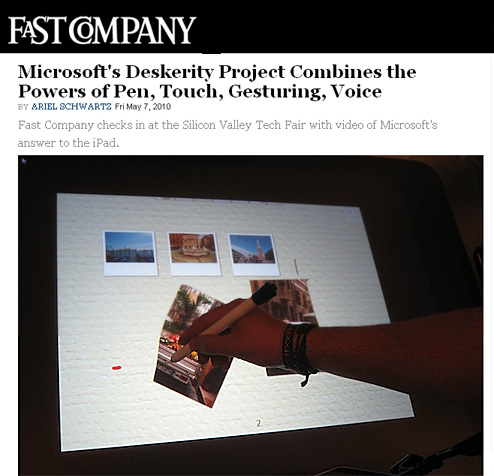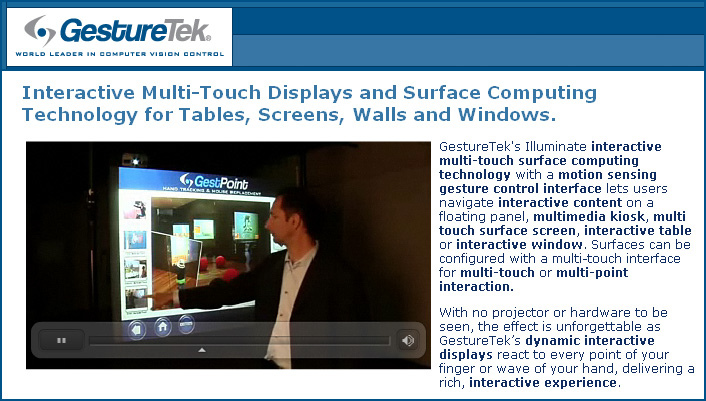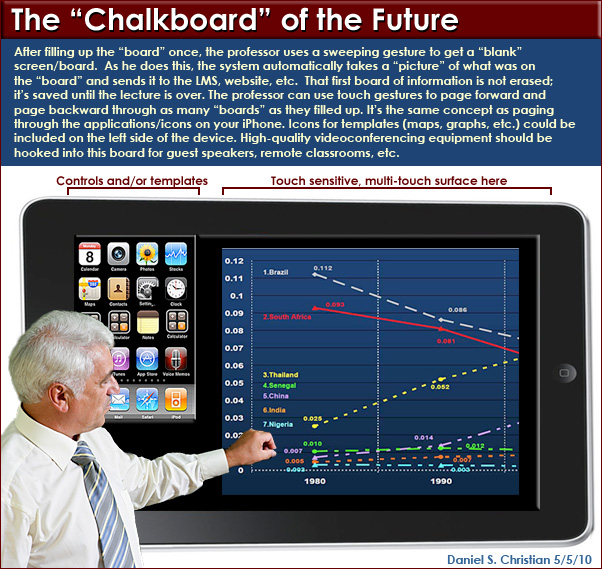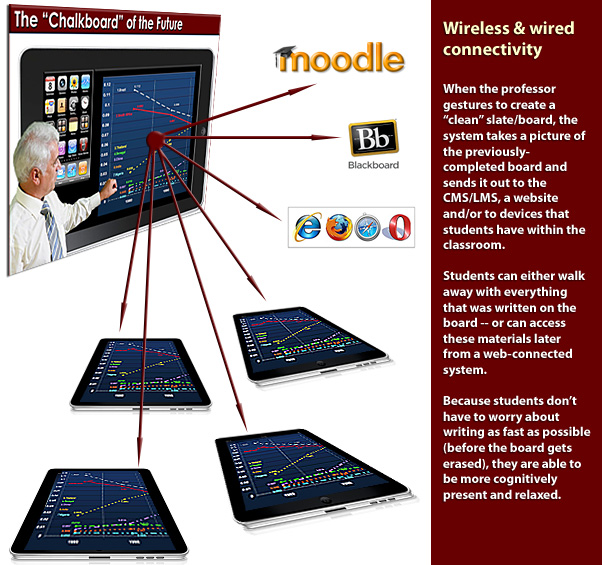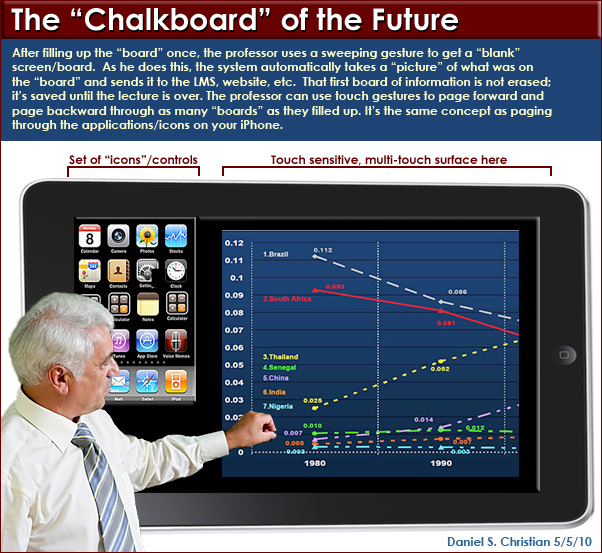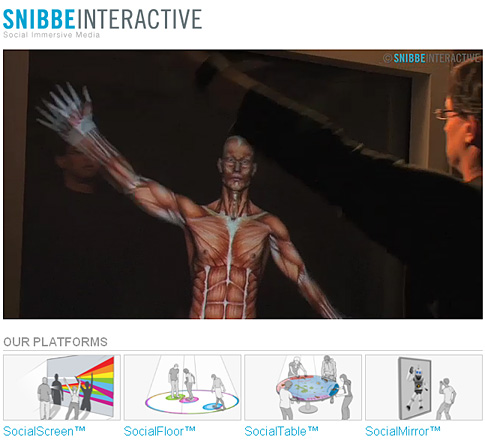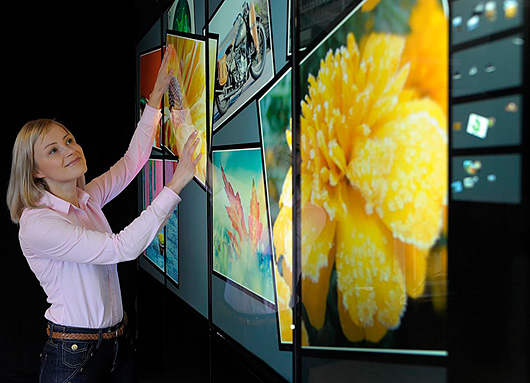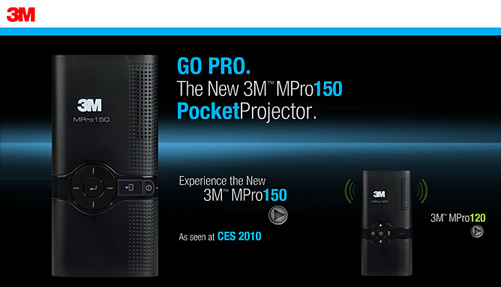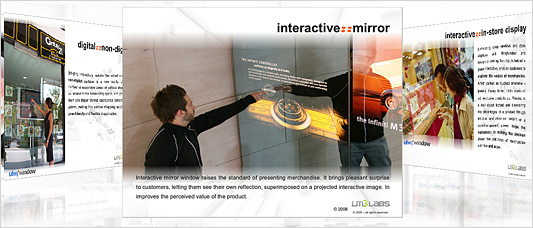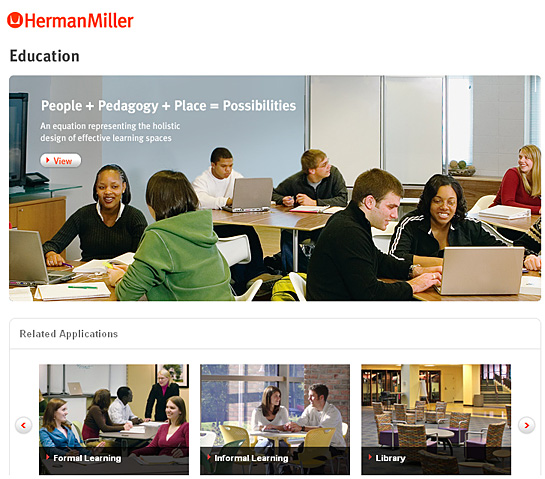Video: Excuse me while I pinch the sky –– from Microsoft Research News and Highlights
Hrvoje Benko of Microsoft Research Redmond unveils Pinch-the-Sky, a new way to display and interact with data in a 3-D environment.
Microsoft’s Deskerity Project combines the powers of pen, touch, gesturing, voice — from FastCompany.com via Mr. Yohan Na, Calvin College, Teaching & Learning Digital Studio
From DSC:
This is where publishers need to go — at least as part of their delivery of educational content. Bring up a textbook, maneuver to chapter ___, and drag the video from the left side of the screen to the right side. Or drag an entire chapter to the right side of the screen to have that chapter unfold before your eyes — and then select the item you want to focus on. Drag your fingers to enlarge the graphics/graph/photo/table/etc.; when you are done discussing that item, shrink it back down, gesture it to the side, and go to the next item. Have the board take pictures accordingly and send those pictures to multiple sources.
…
11 reasons advanced technology classrooms fail — CampusTechnology.com
From DSC:
While I agree with most of these, the solution may be found in restructuring who all is on the “Smart Classroom Teams” out there and/or there need to be better information exchanges between IT, facilities, telecommunications, A/V, teaching and learning groups, project managers and faculty members.
Crestron sets new standards for digital system design and installation — from eschoolnews.com
ROCKLEIGH, NJ – Crestron announces its new HD Digital Transport and Distribution System Specification (HD-DTDS) and DigitalMedia™ Certification (DMC) program. Digital technologies have transformed the way we live, learn and work; Crestron DigitalMedia was developed to meet the challenges of this new era. Now, Crestron is providing the definitive design, installation and commissioning specification to guarantee reliable performance of digital AV systems. The HD-DTDS establishes an industry standard, and the DMC program ensures that AV professionals are fully educated and adhere to that standard. The new specification and certification gives clients the confidence that our industry remains a trusted and valued technology resource.
Beyond the iPad: Massive MultiTouch Displays Have Big Social Potential — from Wired.com [via touchuserinterface.com]
Apple appears to have been right in betting that people would embrace a big version of the iPod Touch; the increased sense of intimacy with no keyboard or mouse chaperons is palpable. But even larger touchscreens, like the one the Finnish company MultiTouch let us play around with last week, can track each fingertip of a large group of people — a key distinction that enables a more social set of behaviors, because multiple people can use them at the same time.
These screens maintain their sensitivity to touch even when mounted behind bulletproof glass up to one inch thick, which makes MultiTouch’s screens equally suited to the board room, a university lab or public displays. Though they are probably too expensive to put one in your home, unless your home has been featured on Lifestyles of the Rich and Famous or Cribs.
Recommendation from DSC:
Investigate piloting a multi-touch wall in one of your smart classrooms. I am aiming for this — as it is nicely addresses multiple disciplines.
Clear trend in pocket projectors — NY Times by David Pogue

List of several small/portable projectors from compusa
Touch floors could be next step in computer interfaces — from NewScientist.com
Linking theory to experience: The Learning Studio Research Program
Presented by: Susan Whitmer, Herman Miller Inc. and Dr. Roger Yohe, Estrella Mountain Community College
Tuesday, May 11, 2010, 1:00 p.m. EST
What You’ll Learn:
With more than five billion assignable square feet of space on college and university campuses today, what proof is there that this vast inventory of learning space has any effect on the student learning experience? Join us for a conversation about the rigorous quantitative and qualitative research methods we’re using to understand the relationship between learning spaces and the student and faculty experience.
Also see:
Student Success in College: Creating Conditions That Matter
Preface.
PART ONE: INTRODUCTION.
1. Student Engagement: A Key to Student Success.
PART TWO: PROPERTIES AND CONDITIONS COMMON TO EDUCATIONALLY EFFECTIVE COLLEGES.
2. “Living” Mission and “Lived” Educational Philosophy.
3. An Unshakeable Focus on Student Learning.
4. Environments Adapted for Educational Enrichment.
5. Clear Pathways to Student Success.
6. An Improvement-Oriented Ethos.
7. Shared Responsibility for Educational Quality and Student Success.
PART THREE: EFFECTIVE PRACTICES USED AT DEEP COLLEGES AND UNIVERSITIES.
8. Academic Challenge.
9. Active and Collaborative Learning.
10. Student-Faculty Interaction.
11. Enriching Educational Experiences.
12. Supportive Campus Environment.
PART FOUR: SUMMARY AND RECOMMENDATIONS.
13. Principles for Promoting Student Success.
References.
Appendices.
Appendix A: Research Methods.
Appendix B: Project DEEP Research Team.
Appendix C: National Survey of Student Engagement.
Index.
| Course Information |
| Webinar Recording
Bibliography Barr, Robert B., and John Tagg. “From Teaching to Learning–A New Paradigm for Undergraduate Education.” Change 27. N6 (1995): 1225. Print. Bransford, John Douglas. How People Learn: Brain, Mind, Experience, and School. Washington, D.C.: National Academy, 2000. Print. Chickering, Arthur W., and Zelda F. Gamson. Seven Principles for Good Practice in Undergraduate Education. Publication. Washington: American Association for Higher Education, 1987. Print. Garcia, Linda L. Millennial Students’ and Faculty’s Perceptions of a New Generation of Learning Classrooms. Diss. University of Texas at Austin, 2007. Print. George, Gene, Tom Erwin, and Briony Barnes. “Learning Spaces as a Strategic Priority.” EDUCAUSE Quarterly. EDUCAUSE, 1 Nov. 2009. Web. 3 May 2010. Kuh, George D., Jillian Kinzie, John H. Schuh, Elizabeth J. Whitt, and &. Associates. Student Success in College: Creating Conditions That Matter. San Francisco: Jossey–Bass, 2005. Print. Rickes, Persis C. “Make Way for Millennials! How Today’s Students Are Shaping Higher Education Space.” Planning for Higher Education 37.2 (2009): 7–17. Print. Wabash National Study of Liberal Arts Education. Center of Inquiry: Wabash College. Wabash College. Web. 4 May 2010. |









